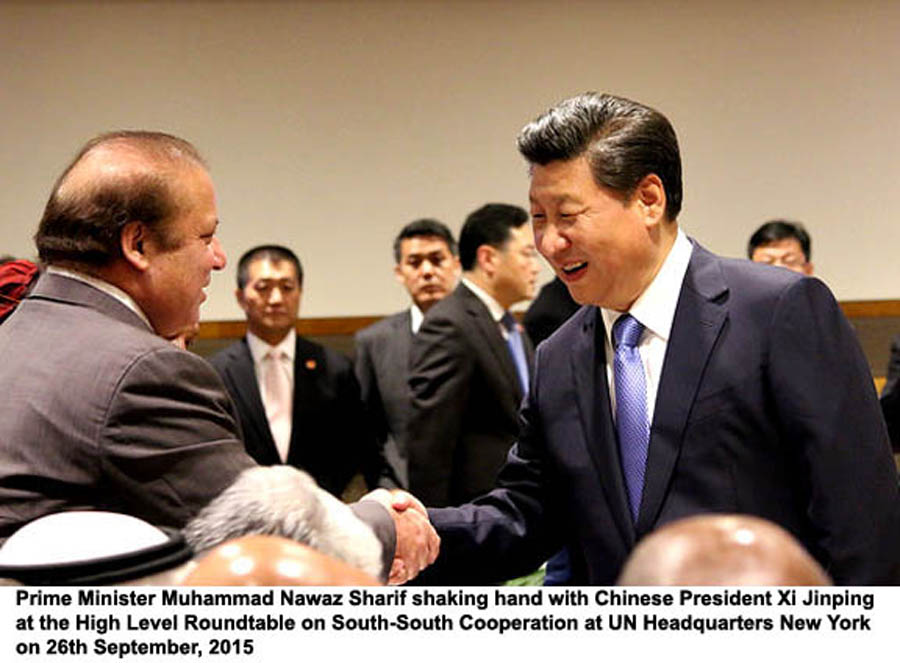
The purpose of the agreement is to foster cultural and commercial relationship between the sister cities. Now a question arises why is Chengdu selected for this purpose? Keeping aside the government rationale, this decision makes much sense from the economic angle.
In order to comprehend this point, one has to take a look at the positioning of Chengdu on the map of China.
CPEC: Chinese work ethic and its implication for Pakistan
Located in southwestern part of the country, Chengdu is the nearest first-tier city to Pakistan. Its road distance with Kashgar, the starting point of CPEC, is around 4,000 kilometres. However, at a distance of 1,900 km, Shenzhen is the closest seaport to Chengdu.
If the sea distance is taken into account, a shipment from Chengdu destined for the Middle East, Africa and Europe has to cover, then CPEC becomes a viable proposition for Chengdu-based traders.
Like Lahore, Chengdu is located in the heart of China’s breadbasket, the Sichuan province. A landlocked territory, Sichuan is the third most populous Chinese province with a population of 82 million. Chengdu, its capital, has emerged as the star performer of the Chinese ‘Go West’ policy initiated in the 2000s.
Milken Institute, a US-based think tank, has ranked Chengdu first among best business cities of China in 2015. With a population of 14 million against Lahore’s 9 million, Chengdu’s economy of $173 billion is more than three-fold bigger than that of Lahore.
Enormous growth of the last decade and a half in the western region creates a perfect alibi for China to engage in its One Belt One Road (OBOR) initiative to sustain this forward journey.
Chengdu is dubbed the hub of transportation and communication in western China. It has the fourth busiest airport in China. Over half of the Fortune Global 500 companies have their offices in the city.
Lessons to learn
Besides economy, Lahore needs to learn a lot of political lessons from the governance of Chengdu. Unlike Lahore, where the chief minister of Punjab is the person calling the shots, it is the party secretary and mayor of Chengdu that are leading its growth plank.
CPEC: Perils ahead for Pakistan
With this decentralised approach, fortunes of Chengdu are managed much better by its municipal officials than if they were handled directly by the provincial leadership of Sichuan.
The sister-city relationship with Lahore was led by Tang Liangzhi, the mayor of Chengdu, who met Shahbaz Sharif to finalise the agreement.
This scenario is often repeated at other local-level collaborations between Pakistani and Chinese officials. We need to understand the limitation of the federal and provincial leadership to engage with the number of Chinese officials and enterprises in their numerous meetings.
China has a population of 1.3 billion and an economy of $11 trillion. It has 22 provinces, five autonomous regions, four municipalities and 291 prefecture-level cities.
Pakistan needs to expand its political-level engagement with Chinese local authorities to facilitate economic collaboration and investments.
With local bodies set at the saddle in Pakistan, now it is the turn of mayors of large metropolitan centres to take off some of the load from the shoulders of federal and provincial leadership.
Indeed, a direct interaction between Mubashir Javaid, Mayor of Lahore and Tang Liangzhi, Mayor of Chengdu, may create more synergy in inducing economic facilitation and cooperation. Pakistan needs to move fast on nurturing this grassroots-level collaboration with Chinese authorities.
A vibrant city like Chengdu will not wait for bureaucratic niceties to forge ahead. It will spread its tentacles all around to optimise its growth potential.
What Pakistan can learn from China's science-driven expansion
Cognisant of the economic importance of Chengdu, India has opened its consulate there last year. Indian IT giants, like Wipro and NIIT, have established their development and training facilities in Chengdu.
Bangalore and Chengdu were officially declared sister cities in 2013. Now, Lahore, the IT hub of Pakistan, has to think about moves to create business relationship with Chengdu, its sister city. Who could be better salesman of Lahore than its mayor, pitching business potential of the city to companies in Chengdu.
The writer is a director at the Policy Research Institute of Market Economy
Published in The Express Tribune, December 19th, 2016.
Like Business on Facebook, follow @TribuneBiz on Twitter to stay informed and join in the conversation.
1731329418-0/BeFunky-collage-(39)1731329418-0-405x300.webp)
















COMMENTS
Comments are moderated and generally will be posted if they are on-topic and not abusive.
For more information, please see our Comments FAQ